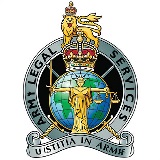*/

Creating advocacy opportunities for juniors is now the expectation but not always easy to put into effect. Tom Mitcheson KC distils developing best practice from the Patents Court initiative already bearing fruit
On 8 November 2023 the Lady Chief Justice, Master of the Rolls and Heads of Divisions issued a joint statement encouraging the participation of junior counsel in general, and female counsel in particular, in advancing oral argument in courts and tribunals hearings. Judges will be expected to ask whether this has been considered. On 7 March 2024, Lord Reed, President of the Supreme Court issued a practice note stating that the court similarly expects a speaking part for junior counsel in all suitable cases, or at least confirmation that this has been considered.
These statements will have been welcomed by everyone at the Bar. They echo attempts in the Patents Court and the Commercial Court to increase opportunities for juniors, but experience tells us that it is not always easy to put this into effect. I have been asked by Counsel to share some of the background to the Patents Court initiative and recent reflections on best practice which can be applied by leaders and juniors across the Bar as a whole.
It is helpful at the outset to understand what has driven the initiative. As far as the Patents Court is concerned, the process began in 2018 through the London Chapter of an organisation known as ChIPs (Chiefs in Intellectual Property). Originally set up by a group of senior female in-house lawyers in Silicon Valley, ChIPs exists to promote and support diversity in STEM, law and government. It was apparent to those working in these fields that there was a lack of balance in those representing them. Younger (and more diverse) lawyers had difficulty in getting on their feet, exacerbated by trials that were less frequent and more valuable. In an attempt to rectify this, ChIPs was involved in promoting various model orders which have been implemented by certain federal judges in the US to encourage junior participation. Importantly, the drive to increase the diversity of representation therefore originated from clients.
The desire of clients (particularly US tech companies) to increase diversity in their legal teams started to become apparent in the UK too and the London Chapter of ChIPs set up a working group (of which I was part) to try to implement similar model orders in the Patents Court Guide. After consulting with users and with the support of all former and current Patents Court Judges, changes to the Patents Court Guide were implemented by Mr Justice Meade in February 2022. In the meantime, a similar practice had also been adopted in the Commercial Court.
The additions to the Patents Court Guide encourage parties to consider whether some or all of any interim application could be conducted by juniors. Disclosure applications are identified as being particularly suitable for juniors. For case management conferences, parties are required to consider whether senior advocates need to attend at all, and even if they do, if juniors can perform some of the advocacy. At the pre-trial review (PTR) the parties are required to consider which aspects of the advocacy at trial could be conducted by juniors. Finally, post-trial hearings are highlighted as being suitable for juniors – dealing with costs and consequential issues.
In November 2023 a panel discussion chaired by Meade J at WilmerHale tried to distil what had been learned since the implementation of the guidance in the Patents Court and how it might be improved. Although there is not yet any data, anecdotally it was felt that the initiative was already bearing fruit. There were three key take-home messages.
First, planning the involvement of juniors early in the case is vitally important. This is for a number of reasons. It warms up everyone in the team to the idea – clients, solicitors and the juniors themselves. It is unlikely that a client will appreciate being told that the junior will be performing some advocacy for the first time at the door of the court. Forward planning also allows both leaders and juniors to divide up the various tasks which need to be performed and allows for longer lead times to ensure junior advocates have the time to prepare and work through submissions. All leaders are conscious of the important role that juniors already play in the trial process. Handing them a chunk of additional advocacy work to do at trial could divert them away from the role that they are already expected to perform. So it may be necessary to give them more time to prepare or for the leader to receive support from other members of the team.
Second, the promotion of juniors requires more senior members of the team to create opportunities for them in advance of hearings. In other words, the practice is not only about court appearances. Leaders should encourage juniors to express their views in meetings and promote their work to the rest of the team and to the clients. Raising the profile of a junior advocate is important for building confidence and establishing trust with clients. This again requires advanced planning.
Third, it is extremely clear that judicial encouragement is vitally important to develop the practice. This is emphasised in the Lady Chief Justice’s statement. Proactive judicial encouragement reminds team members of the guidance and gives clients comfort that the court supports and, where appropriate, expects the use of junior advocates. Although the guidance is now encapsulated in various practice guides, it is unlikely that clients will have these specifically in mind as trial approaches. Indications from judges in advance of a hearing or at a PTR that parties should consider the use of junior advocates is a huge help in focusing clients and client teams on identifying advocacy opportunities. Culturally, we need to normalise the idea that a judge may be addressed by more than one voice on each side at a hearing.
A number of examples were given of successful and not so successful implementation techniques. It is clear that leaders have a responsibility to try to agree ‘equality of arms’ with the other side and perhaps agree in advance with their opponents which points might be dealt with by the juniors. Alternatively, the juniors themselves should raise the possibility with their leaders and/or each other.
One point made forcefully by Meade J is that it is no good giving the juniors just the points that the leader expects to lose. That is unfair on the junior – and the other side might well not agree to such an approach as presumably they are expecting to win it. It is much better to find discrete points of law or cross-examination topics which can be conveniently dealt with by a second person. The prospect of the juniors on both sides dealing with those points can then be raised internally and with the other side well in advance of the hearing.
It is clear that it may not be possible in every case to carve up the advocacy and indeed the junior themselves may not wish to do it. That is one of the reasons why the prospect of costs sanctions if the practice was not followed has been rejected – in the end the client must be entitled to instruct the advocate of their choice. However, it is clear that an important role for the more senior barrister is to persuade the client that they should want to instruct the junior too.
There is no doubt that it requires effort and forward-planning to create advocacy opportunities for juniors in civil litigation. However, the framework now exists to allow this and it should become a routine part of any case. There is also no doubt that promoting juniors is good for diversity, for clients and for the Bar as a whole because today’s juniors will become tomorrow’s leaders and judges. It is incumbent on all of us to share best practices in order to promote our profession.
The Lady Chief Justice, Master of the Rolls and Heads of Divisions’ statement and Lord Reed’s Practice Note echo attempts in the Patents Court (see The Patents Court Guide, 5.3, 7. 3A, 12.9A, 19.1) and the Commercial Court (see The Commercial Court Guide, D.7.1, E.1.4, J.8.7, J.13.3).

On 8 November 2023 the Lady Chief Justice, Master of the Rolls and Heads of Divisions issued a joint statement encouraging the participation of junior counsel in general, and female counsel in particular, in advancing oral argument in courts and tribunals hearings. Judges will be expected to ask whether this has been considered. On 7 March 2024, Lord Reed, President of the Supreme Court issued a practice note stating that the court similarly expects a speaking part for junior counsel in all suitable cases, or at least confirmation that this has been considered.
These statements will have been welcomed by everyone at the Bar. They echo attempts in the Patents Court and the Commercial Court to increase opportunities for juniors, but experience tells us that it is not always easy to put this into effect. I have been asked by Counsel to share some of the background to the Patents Court initiative and recent reflections on best practice which can be applied by leaders and juniors across the Bar as a whole.
It is helpful at the outset to understand what has driven the initiative. As far as the Patents Court is concerned, the process began in 2018 through the London Chapter of an organisation known as ChIPs (Chiefs in Intellectual Property). Originally set up by a group of senior female in-house lawyers in Silicon Valley, ChIPs exists to promote and support diversity in STEM, law and government. It was apparent to those working in these fields that there was a lack of balance in those representing them. Younger (and more diverse) lawyers had difficulty in getting on their feet, exacerbated by trials that were less frequent and more valuable. In an attempt to rectify this, ChIPs was involved in promoting various model orders which have been implemented by certain federal judges in the US to encourage junior participation. Importantly, the drive to increase the diversity of representation therefore originated from clients.
The desire of clients (particularly US tech companies) to increase diversity in their legal teams started to become apparent in the UK too and the London Chapter of ChIPs set up a working group (of which I was part) to try to implement similar model orders in the Patents Court Guide. After consulting with users and with the support of all former and current Patents Court Judges, changes to the Patents Court Guide were implemented by Mr Justice Meade in February 2022. In the meantime, a similar practice had also been adopted in the Commercial Court.
The additions to the Patents Court Guide encourage parties to consider whether some or all of any interim application could be conducted by juniors. Disclosure applications are identified as being particularly suitable for juniors. For case management conferences, parties are required to consider whether senior advocates need to attend at all, and even if they do, if juniors can perform some of the advocacy. At the pre-trial review (PTR) the parties are required to consider which aspects of the advocacy at trial could be conducted by juniors. Finally, post-trial hearings are highlighted as being suitable for juniors – dealing with costs and consequential issues.
In November 2023 a panel discussion chaired by Meade J at WilmerHale tried to distil what had been learned since the implementation of the guidance in the Patents Court and how it might be improved. Although there is not yet any data, anecdotally it was felt that the initiative was already bearing fruit. There were three key take-home messages.
First, planning the involvement of juniors early in the case is vitally important. This is for a number of reasons. It warms up everyone in the team to the idea – clients, solicitors and the juniors themselves. It is unlikely that a client will appreciate being told that the junior will be performing some advocacy for the first time at the door of the court. Forward planning also allows both leaders and juniors to divide up the various tasks which need to be performed and allows for longer lead times to ensure junior advocates have the time to prepare and work through submissions. All leaders are conscious of the important role that juniors already play in the trial process. Handing them a chunk of additional advocacy work to do at trial could divert them away from the role that they are already expected to perform. So it may be necessary to give them more time to prepare or for the leader to receive support from other members of the team.
Second, the promotion of juniors requires more senior members of the team to create opportunities for them in advance of hearings. In other words, the practice is not only about court appearances. Leaders should encourage juniors to express their views in meetings and promote their work to the rest of the team and to the clients. Raising the profile of a junior advocate is important for building confidence and establishing trust with clients. This again requires advanced planning.
Third, it is extremely clear that judicial encouragement is vitally important to develop the practice. This is emphasised in the Lady Chief Justice’s statement. Proactive judicial encouragement reminds team members of the guidance and gives clients comfort that the court supports and, where appropriate, expects the use of junior advocates. Although the guidance is now encapsulated in various practice guides, it is unlikely that clients will have these specifically in mind as trial approaches. Indications from judges in advance of a hearing or at a PTR that parties should consider the use of junior advocates is a huge help in focusing clients and client teams on identifying advocacy opportunities. Culturally, we need to normalise the idea that a judge may be addressed by more than one voice on each side at a hearing.
A number of examples were given of successful and not so successful implementation techniques. It is clear that leaders have a responsibility to try to agree ‘equality of arms’ with the other side and perhaps agree in advance with their opponents which points might be dealt with by the juniors. Alternatively, the juniors themselves should raise the possibility with their leaders and/or each other.
One point made forcefully by Meade J is that it is no good giving the juniors just the points that the leader expects to lose. That is unfair on the junior – and the other side might well not agree to such an approach as presumably they are expecting to win it. It is much better to find discrete points of law or cross-examination topics which can be conveniently dealt with by a second person. The prospect of the juniors on both sides dealing with those points can then be raised internally and with the other side well in advance of the hearing.
It is clear that it may not be possible in every case to carve up the advocacy and indeed the junior themselves may not wish to do it. That is one of the reasons why the prospect of costs sanctions if the practice was not followed has been rejected – in the end the client must be entitled to instruct the advocate of their choice. However, it is clear that an important role for the more senior barrister is to persuade the client that they should want to instruct the junior too.
There is no doubt that it requires effort and forward-planning to create advocacy opportunities for juniors in civil litigation. However, the framework now exists to allow this and it should become a routine part of any case. There is also no doubt that promoting juniors is good for diversity, for clients and for the Bar as a whole because today’s juniors will become tomorrow’s leaders and judges. It is incumbent on all of us to share best practices in order to promote our profession.
The Lady Chief Justice, Master of the Rolls and Heads of Divisions’ statement and Lord Reed’s Practice Note echo attempts in the Patents Court (see The Patents Court Guide, 5.3, 7. 3A, 12.9A, 19.1) and the Commercial Court (see The Commercial Court Guide, D.7.1, E.1.4, J.8.7, J.13.3).
Creating advocacy opportunities for juniors is now the expectation but not always easy to put into effect. Tom Mitcheson KC distils developing best practice from the Patents Court initiative already bearing fruit

What’s it really like to work in the National Crime Agency’s in-house legal team? TM, a lawyer in the NCA’s Financial Disruptions Litigation team, shares a day in her life

By the Chartered Governance Institute UK Ireland

Q and A with Major Susie Brooke, Legal Officer in Army Legal Services

Have you considered being a barrister in the British Army? Here’s an insight into a career in Army Legal Services

Clare describes her journey from Crown Prosecution Service legal trainee to Senior Crown Prosecutor, a typical ‘day in the life’ and the inspiration she draws from her career

What's it like being a legal trainee at the Crown Prosecution Service? Amy describes what drew her to the role, the skills required and a typical day in the life